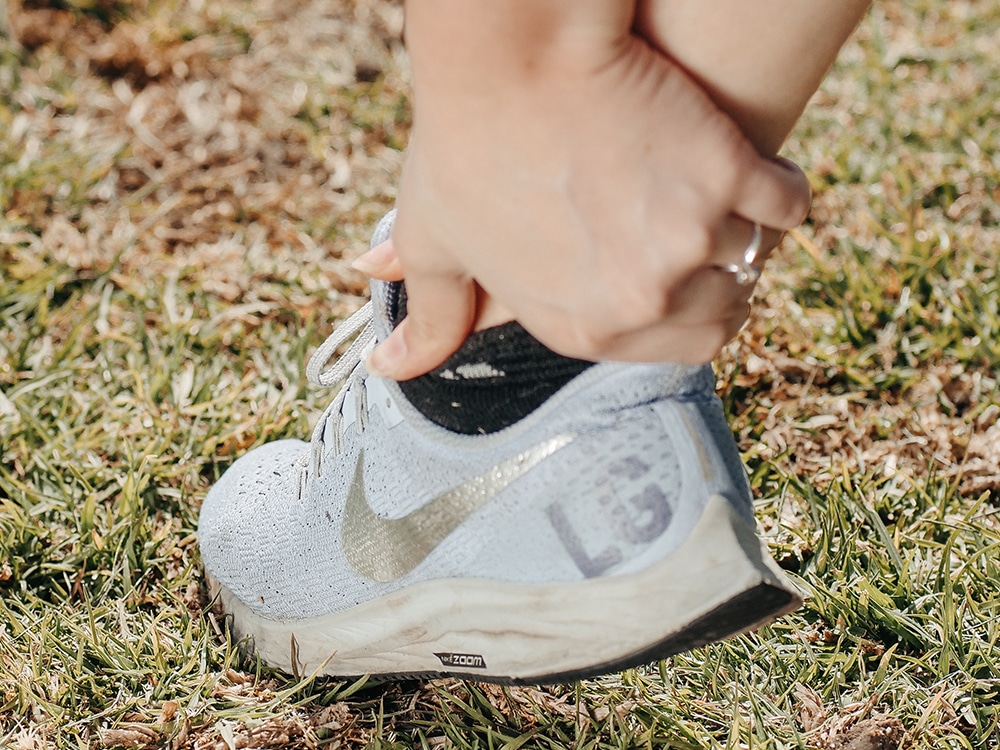Today we’re talking about heel pain. Experiencing heel pain that prevents you from moving around can be very disruptive to daily living.
If you are experiencing pain in the bottom of your heel, it may be worth getting checked out. It could be that your plantar fascia ligament is inflamed and could be causing your pain.
What is Plantar Faciitis?
Plantar fasciitis is a common condition that can cause an inflammation of the plantar fascia and the perifascial structures. The plantar fascia is a band of tissue that runs along the bottom of your foot and connects your heel bone to your toes. The plantar fascia is meant to absorb increased amounts of stress at the bottom of your foot. Tearing or damage to the plantar fascia can be caused by an increase of high intensity pressure to the bottom of the foot over long periods. This leads to inflammation of the plantar fascia tissues and can result in stiffness and pain in the heel of the foot.

Symptoms of plantar fasciitis
Most often we hear from people with plantar fasciitis complaining about pain at the bottom of the heel and sometimes at the bottom mid-foot area. It most likely will only affect one foot but may affect both feet.
Pain from plantar fasciitis can develop gradually over time. Stabbing pain in the heel is the main symptom of plantar fasciitis. Others may feel a dull or sharp pain, or a burning / aching sensation at the bottom of the foot extending outward from the heel.
The pain main be worse in the morning, after being off your feet for an extended period of time, or after exercise.
Causes and risk factors of plantar fasciitis
Plantar fasciitis tends to be brought on due to overstretching or overuse of this plantar fascia ligament. Additionally, a tear or small tears in the fascia tissue can also cause the pain. The shape of your foot can also be a cause for you developing plantar fasciitis.
Men and women between the ages of 40 and 60 who are active are at the highest risk for developing plantar fasciitis.
Some factors that may lead to plantar fasciitis are:
- being on your feet for long period of time
- being between the ages of 40 and 60
- being overweight
- starting a new exercises routine, or are running often
- having structural foot issues, such as high arches or flat feet.
- having tight Achilles tendons, which are the tendons attaching your calf muscles to your heels.
- wearing shoes with soft soles and poor arch support often
Treatment for plantar fasciitis
Short-term treatments for plantar fasciitis include rest, ice, anti-inflammatory medications, and proper shoes with a custom shoe orthotic. If those don’t ease the pain, an injection of a corticosteroid directly into the damaged section of the ligament can help. You can speak to your doctor about this treatment.
Effective long-term treatments for plantar fasciitis include physiotherapy, stretching exercises, and shockwave therapy. Shockwave therapy uses high levels of targeted energy to promote healing and reduce pain.
Surgery is the most extreme therapy. This is only done in cases that are severe and last longer than 6–12 months.
How does shock wave therapy for plantar fasciitis work?
The process depends on a shockwave machine, which produces low-level acoustic (sound) waves. These are precisely used throughout the foot to target areas that are suffering from pain, injury, or limited mobility, particularly in the plantar fascia ligament.
Shockwave therapy uses high-energy acoustic waves which are tailed in strength to suit your body. Shockwave therapy will affect only the tissues that it’s used on, creating healthy inflammation, and stimulating the body’s natural healing response.
Shockwave therapy effects:
- Reduced pain
- Accelerated tissue growth and self-repair
- Reduced long-term inflammation
- Improved mobility and flexibility
- Natural analgesic (pain-killing) effect
Shockwave treatment is noninvasive and can drastically decrease pain and other plantar fasciitis symptoms. This is a great alternative treatment for patients who do not want to medication or have invasive surgeries.
How effective is shock wave therapy?
A study done in 2021 indicated that shockwave therapy is a successful treatment for plantar fasciitis. What was discovered during the research was that after shockwave treatments the thickness of the plantar fascia was reduced. The inflammation of the plantar fascia was also reduced.








